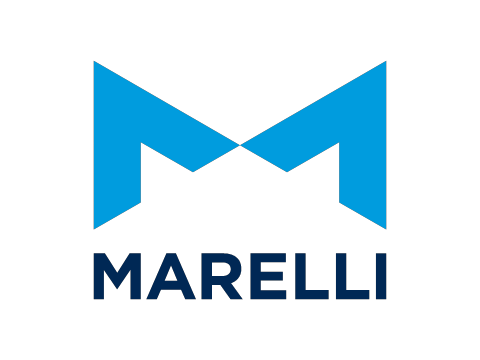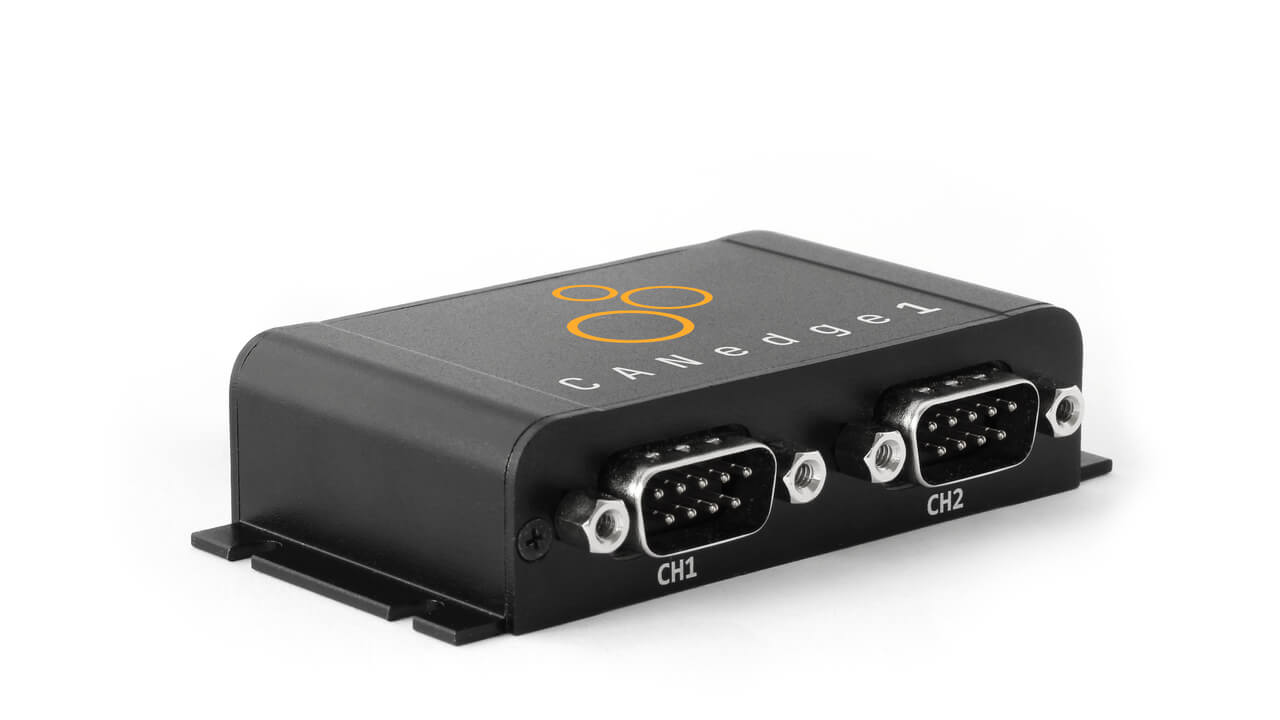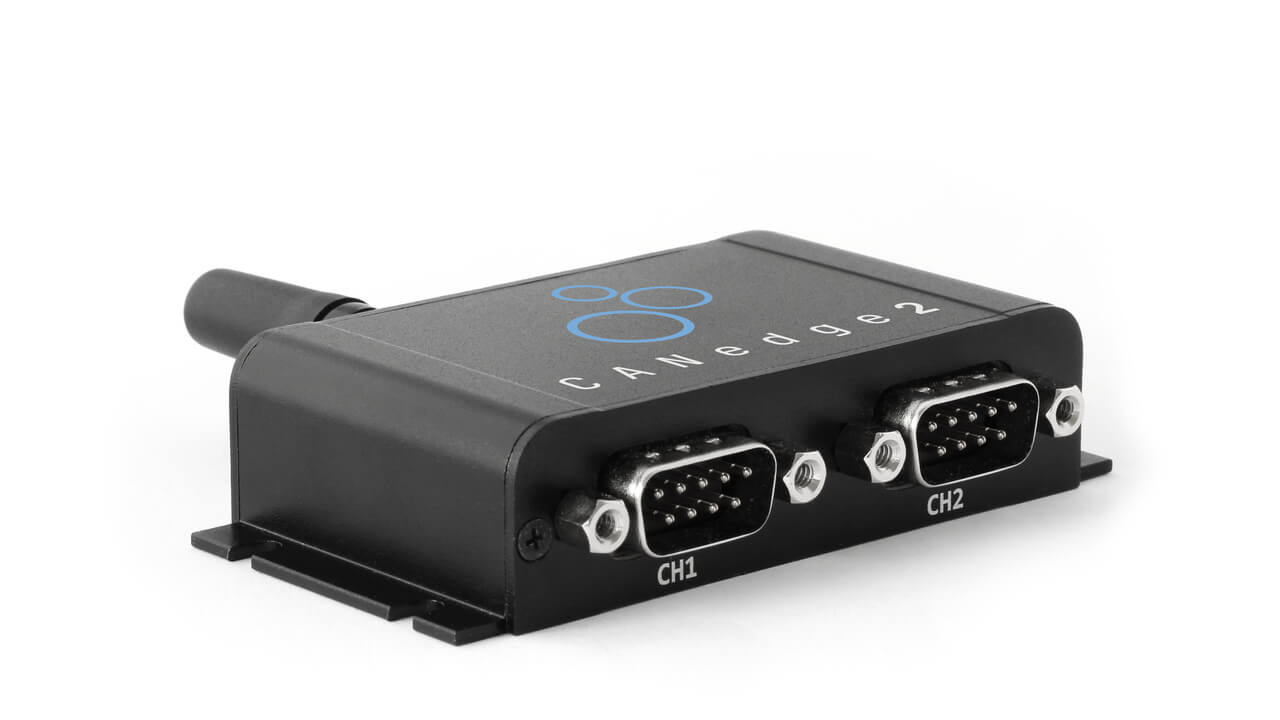CAN FD Data Logger - Record Your CAN Bus (Flexible Data-Rate)
Need to record CAN FD (flexible data-rate) data?
This intro focuses on logging CAN FD data - incl. the top 4 benefits, practical logging, example use cases and key features of the CANedge CAN FD data logger.
Note: In contrast to CAN FD interfaces, the CANedge logs data to an SD card. Further, the CANedge2 lets you set up WiFi based CAN FD telematics.
Learn below why the CANedge is perfect for CAN FD data logging at any scale.
To recap the basics, check out our intros to CAN and CAN FD.
In short: CAN FD is the next generation of Classical CAN (Controller Area Network). CAN FD enables a far higher data throughput than Classical CAN, making it ideal for modern applications with increased bandwidth requirements.
The CAN FD frame supports up to 64 data bytes, while 'bit-rate switching' enables data payload rates of up to 5 Mbit/s.
As of 2020, the CAN FD standard is increasingly being rolled out - e.g. in the new VW golf and next gen General Motors vehicles. Further, standards are being developed for J1939 FD (heavy-duty vehicles) and CANopen FD (industrial automation)

Top 4 benefits of CAN FD data logging
CAN FD logging lets you collect data from any CAN FD based application - below are the top benefits:

Faster R&D and prototyping
Low cost CAN FD data loggers let you perform large-scale data collection from prototypes during late-stage field tests - helping to reduce time-to-market drastically

Rare issue diagnostics
As an OEM, it is key to be able to quickly diagnose and resolve issues. Here, a CAN FD logger lets you analyze the historical data linked to specific issues and events

Field data & warranty handling
CAN FD loggers can be deployed as black boxes as you move into production. This enables insight into field usage, as well as data for use in e.g. warranty dispute handling

Telematics & maintenance
By deploying an IIoT CAN FD logger, you can automate your data collection. This lets you setup telematics dashboards and e.g. automotive predictive maintenance
Which benefits are relevant to your CAN FD logging use case? Reach out for free sparring!
Contact usCase study: CAN FD telematics

Learn how Magnetti Marelli use the CANedge2 to collect CAN FD data from their telematics ECU for debugging - converting the raw MF4 files to Vector ASC for further processing.
"The CANedge2 is a great device at a super price - and it absolutely fits our needs!"
full case study 100+ case studies
How to log CAN FD data?
Below we outline how to record data using a CAN FD data logger.
Configure your device
To log CAN FD data, you'll need to specify the nominal arbitration bit-rate (5K to 1 Mbit/s) and the FD bit-rate (1, 2, 4 Mbit/s). In some cases you may wish to record the non-ISO CAN FD protocol - in which case you'll enable this in the config.
The CANedge also supports silent mode, filtering, prescalers, transmit lists, data compression and data encryption.
When you're logging CAN bus data with flexible data-rate you do not have to specify whether to enable bit-rate switching or not. However, if you're going to transmit CAN FD data you'll need to actively specify whether to enable bit-rate switching. If enabled, your transmit message data payload will be transmitted at the FD bit-rate, e.g. 2 Mbit/s or 4 Mbit/s.


Collect data via SD, WiFi or 3G/4G
Once you've configured your device, simply connect it to your application to start recording raw CAN FD frames to the SD card.
To collect the log files, simply extract the memory card after e.g. a day, week or several months.
With the CANedge2, you can also auto-push the log files via WiFi to your own server (local, dedicated or cloud). Or, you can use the CANedge3 to upload data via 3G/4G using your own SIM card.
Process your CAN FD data
The CANedge offers various tools for processing CAN FD data.
For example, you can convert the log files into other file formats like Vector ASC (for use in e.g. CANalyzer), PEAK TRC (for use in e.g. PCAN-Explorer), CSV and more.
Or, you can process the data via the 100% free and open source asammdf GUI, which lets you DBC decode and plot your data.
You can also process your data via the free Python API - or display it via customizable browser dashboards.
When you need to decode raw CAN FD frames, you'll often use a CAN database file (DBC) similar to how you'd decode Classical CAN frames.
There is no need to distinguish between the two cases, as the main difference from a data processing perspective is the fact that CAN FD frames support up to 64 data bytes instead of 8 data bytes. The DBC file format accommodates this by adding additional signals to each CAN ID, using start bits that go beyond the initial 8 bytes.
However, you need to ensure that your software tools can correctly load the DBC based CAN FD signals outside the initial 8 data bytes. This is the case for all our CANedge software/API tools.

The CANedge CAN FD data logger
The CANedge CAN bus data logger offers optional GPS/IMU, WiFi and/or 3G/4G - ideal for CAN FD logging and telematics:
Log data out-the-box. Standalone. Link your vehicle to your server in <2 minutes
Extractable 8-32 GB SD. 2xCAN/LIN. CAN FD. Zero data loss. 50 μs RTC. Error frames. MF4
Only 8 x 5 x 2 CM. 100G. Robust alu enclosure. 5+ LEDs. Configurable 5V power out (CH2)
Built-in GPS/IMU. 3x accuracy via sensor fusion. Position, speed, distance & more
Use case examples
Below we provide practical examples of how the CANedge can be used for logging CAN FD data.
Field testing of CAN FD systems
Need to log CAN FD data from prototype vehicles in the field?
As an OEM, you often need to do large-scale field tests of prototype vehicles. Using CAN FD interfaces and laptops in each vehicle is not cost-effective or practical. Instead, deploying a compact standalone CAN FD data logger like the CANedge1 lets you easily collect data across your entire test fleet for R&D purposes - see e.g. this case study from Bosch.

Collect CAN FD field data remotely via 3G/4G
Need to collect data from on-road vehicle fleets or remote machinery?
If you need to collect data frequently or remotely, a pure SD card logger is not a solution. Here, the CANedge2 or CANedge3 can be deployed to log CAN FD data to the SD card - and transfer it via WiFi or 3G/4G to your own server. This is ideal for on-road vehicle fleet monitoring, warehouse telematics or e.g. predictive maintenance of machinery. Devices can be monitored and updated over-the-air via CANcloud - and you can display physical values via free, customizable browser dashboards.
FAQ
Yes, our CANedge loggers support both Classical CAN and CAN FD data logging. Further, you can simultaneously record data from both Classical/FD nodes as the standard dictates that ECUs from both standards should support mixing.
In short: A CAN FD logger is compatible with both Classical CAN and CAN FD.
CAN FD is still being adopted and has only been rolled out in some relatively new applications, such as cars released in 2019/2020. However, several automotive OEMs are moving to CAN FD as the basis for their upcoming cars. In addition, CAN FD will be rolled out to heavy-duty vehicles like trucks, transit buses, excavators and more to serve the need for high-bandwidth features like ADAS (Advanced Driver Assistance Systems). Electric vehicles are also increasingly shifting to CAN FD to e.g. enable the EV battery data communication.
CAN FD is also being deployed in industrial automation applications like robotics, production machinery, medical equipment, smart buildings and special vehicles in e.g. defense.
Autonomous vehicle startups are also increasingly relying on CAN FD to enable the high-bandwidth communication required by e.g. multi-sensor fusion and lidar technologies.
It is a valid question whether you need to get a CAN FD data logger, or if you can go with a regular Classical CAN data logger. While practically no empirical data is available, it is our experience that most use cases today still rely on Classical CAN, rather than CAN FD - and hence short-term you can potentially do with a normal Classical CAN logger.
However, the general consensus in the industry is that it's a matter of a few years before CAN FD will be significantly more common in production vehicles and machinery. This is why we decided to add CAN FD as a 'base feature' in our CANedge series, rather than e.g. limit it to a separate 'pro specs' variant. From our perspective, it is important that your CAN logger is useful many years from now - and CAN FD support is a natural part of that.
We recommend to see our simple intro to CAN FD, which also includes a 15 min video intro.
Below are a number of other resources:
- CAN in Automation (CiA) has many great articles on CAN FD incl. their CAN FD intros
- For an empirical comparison of Classical CAN and CAN FD, see this article
- Wikipedia also has a light and very brief article on CAN FD
- Recently, work has also begun on variant protocols, such as CAN FD Light
Ready to log CAN FD data?
Get your CANedge today!

